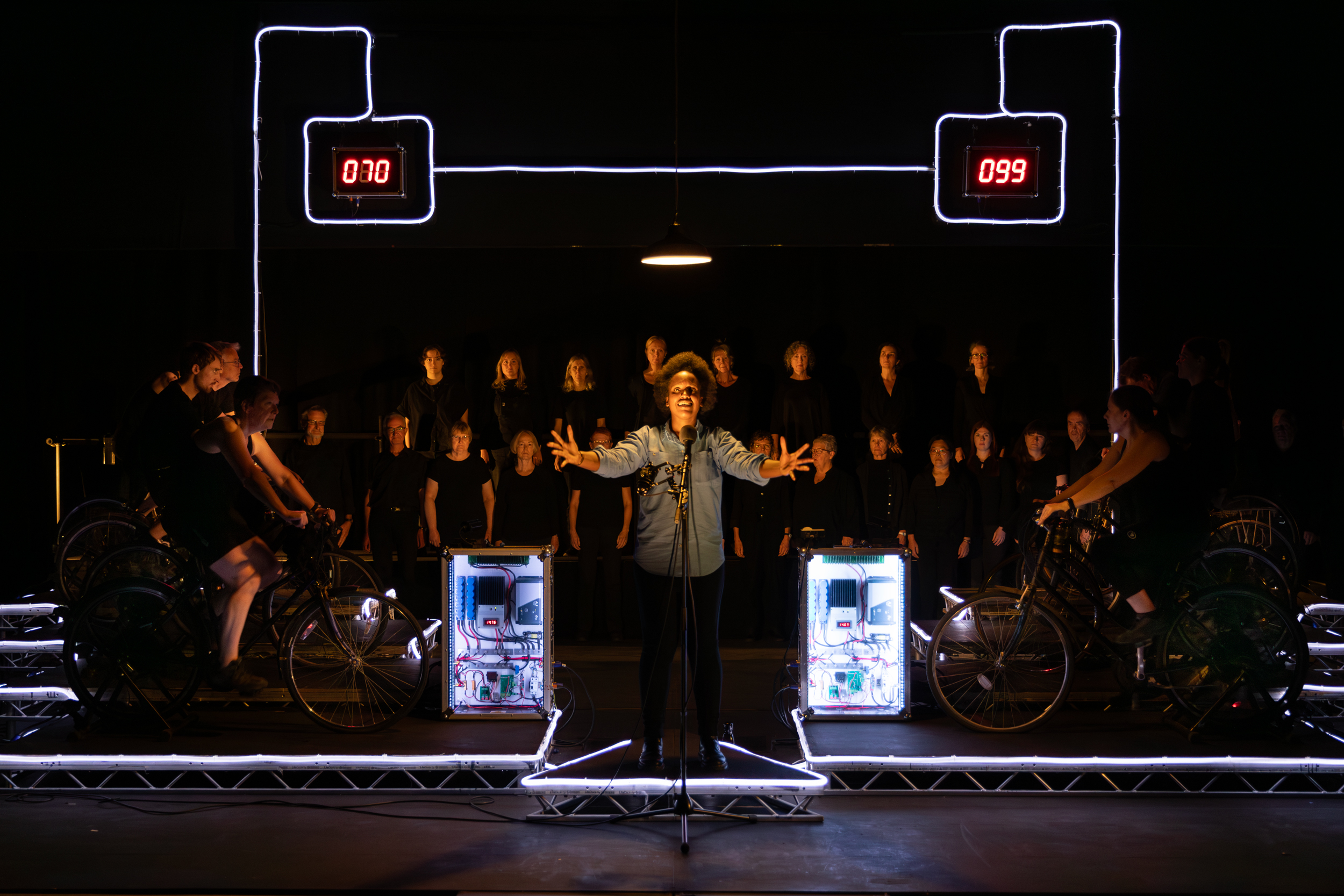Last Thursday, Vision was welcomed to the press night of A Play For the Living In A Time Of Extinction at York Theatre Royal.
The production, written by Miranda Rose Hall and created by Headlong, delivered an innovative, urgent cry for action against the Climate Crisis, with only one actress performing throughout and 8 cyclists powering the entire play.
While theatre productions often tour around the country, to advocate for changing theatre practices to be more environmentally friendly and self-sustainable, a local production team is staging this play at each venue.
Mingyu Lin directed this production in York, and also confirmed that the set and costumes were sourced second-hand, in an effort to reduce the waste produced in theatre.
Though the use of bikes to generate electricity is not a new concept, the play is one of a kind in its stage-set and production, with the cyclists on stage with the actor for the majority of the show.
The cyclists produce all the electricity used in lighting and sound for the performance, once it went “off-grid” (about 15 minutes in), as well as powering a projector for a section towards the end of the show.
Though the cycling is not distractingly loud, their presence reminds us of how the play’s message of climate-consciousness permeates into production.
Technicians joining them on stage each side further added to this, showing the work that goes into theatre, and specifically this challenge in conscious energy use, through the break in the fourth wall.
The show opens with both stage and house lighting on, as Naomi (Stephanie Hutchinson) climbs up on stage. She begins the play alone and in panic, instigating interaction with the audience.
She says “hi”, asks how we are, and then begins the story of the play she was supposed to perform; where the action begins at the beach.
By the end, everyone has died in what she refers to as a ‘carnival of death’.
In contrast to the play she was supposed to perform, the reflection Naomi delivers on the climate, death, and extinction is emotive, unnerving in its realism and simplicity.
Interaction between actor and audience, coupled with the sound of the bikes, create a dialogue on climate change.
The script is littered with anecdotes about the protagonist’s personal history with death: the death of her childhood dog, her mother’s trauma around death that she has inherited, and her best friend’s mum dying in hospital.
All serves as a reminder of the futility of human life, which links nicely to the themes of extinction in the play.
Using personal anecdotes from the audience at points created further connection to Naomi and the subject, highlighting how meaningful nature is to many people. This engagement prevented the play from feeling like a lecture that many have heard before.
Her reflections on human time versus deep geological time further comments on the impact humans have had on the planet in such a short period.
Death, the play observes, is often positioned as distant from extinction. But, to paraphrase the protagonist, dying is to ‘cease to exist’, and extinction to ‘extinguish’; we’re asked to look at extinction the way we look at death.
The main section of the play focuses on the 6 mass extinctions, and humans (and human-made climate change) is the cause of the 6th, already in progress.
In reflecting on death, the protagonist delivers a gut-wrenching final speech full of emotion, as she breaks down imagining a bat’s realisation at the death of members of their species, in an anthropomorphic reckoning with mortality.
Whilst she imagines that her loved ones are at peace in death, the death of a species is framed as tragic and violent because of its unnatural cause – climate change.
In this standout moment, Naomi’s repeated scream “Wake up!”, is a call to action, discouraging the inactive panic that can surround conversations about the climate crisis.
Whilst the first half of the play effectively delivered a history of extinction in fast-paced, snapping segments, the pacing slowed at a point in the show where the protagonist delivers us a summary of all species that have gone extinct within her lifetime.
The format of this section was perhaps what faltered it overall slightly, being the least memorable section of an overall unforgettable performance.
The play often felt like a jumble of themes, foregoing reflecting too deeply on each. Although overwhelming and perhaps lacking some depth, this reflects a world which is constantly overloaded with news and information, further adding to the panic that Naomi feels.
Panic is transferred through the audience, creating the ‘battle cry’ (as described by Headlong) to fight climate change and change society.
The performance ends with a choir, the sung refrain “we” leaving the audience with a lasting reminder of the collectiveness of extinction: the final, frightening outcome of a failure to acknowledge the climate crisis.
So, what was the take away from the play and its production?
Panic is not effective without action, a penetrating and necessary message to be delivered during York Environment Week.
